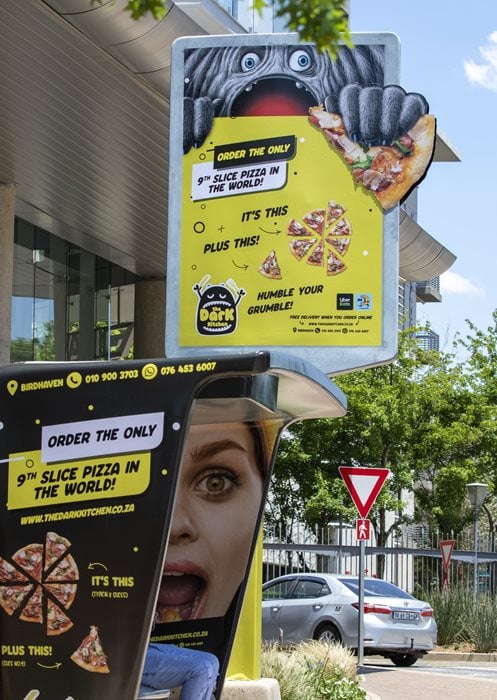Marketing & Media trends
Industry trends
BizTrends Sponsors
#BizTrends2021: Maximising OOH's impact in South Africa

OOH is an essential advertising platform, now more than ever – not despite the changing media landscape, but because of it.
Digital media is predicted to represent 50% of all ad spend by 2024, a trend accelerated by the Covid pandemic. Television has also been doing well but faces the increasing challenge of massive fragmentation, and in South Africa, is plagued by issues with its research methodology.
Nevertheless, these media are hampered by the fact that globally, consumers have an unprecedented choice regarding media and content consumption. OOH is the last media type that is unavoidable, unfragmented and can’t be switched off.
Beyond this, several factors bode well for OOH in South Africa:
Taking digital to new places
Globally, DOOH is set to capture more than 40% of OOH ad spend; locally, we are also fast approaching this level. The digitisation of OOH enables it to compete with electronic mass media by allowing for rapidly changing creative and lower production costs. This has made digital place-based networks one of the fastest-growing mediums both globally and here at home.
Even more exciting is the immersion of digital OOH and connected TV networks into new environments, in which Provantage leads the way. This is popular with advertisers because it supplements broadcast TV audiences, builds reach and frequency and can’t be switched off: If you’re in a mall, taxi rank or golf club, you’ll be exposed to content and advertising. We’re therefore investing in TV audience measurement methodologies, so that clients can make this a part of their TV planning and buying.
Where does OOH thrive? Where there are big infrastructure programs.
Over the past ten years in South Africa, the initial spurt of investment in airports, train networks and other infrastructure has slumped. Post-pandemic, I’m expecting a boom: major events in human history – the two World Wars, the Great Depression and more recently the Financial Crisis of 2007/8 – have been followed by a steep recovery. We’re positioning ourselves for just that.

Add to this, come 2030, Africa will be the fastest urbanising continent, overtaking Asia. Consequently, governments must build infrastructure, which creates great opportunities for OOH, including branded services – infrastructure that OOH delivers in exchange for advertising rights, e.g. digital information panels in transport nodes, Wi-Fi networks, etc.
So, opportunity awaits OOH in South Africa and the continent. To capitalise on this, however, we must tackle certain issues.
Demonstrating the power of OOH, beyond static billboards
During the Covid pandemic, ROI has become by far the most important consideration for advertisers. Accountability is crucial. This makes OOH powerful, because of the difficulties surrounding social media and digital – issues surrounding privacy, bots, ad-blockers and fake news etc.
That said, we still have work to do. People know that OOH is effective and unavoidable, but we need more data to back this up.
The founding of the OMC (Outdoor Measurement Council) has been a giant leap forward in providing reach, frequency and impact data for static billboard faces, thereby serving as an inclusive tool for media agencies to use when they’re procuring billboards, and we’ve seen the results.
The next step is to launch research into transit static media (i.e. taxi ranks, airports and stations) to provide audience data in those zones. Ultimately, we need to have JICs (joint industry committees) to represent each of the different OOH media segments.
Educating administrators
A key factor impeding the local OOH industry is a skill shortage among government and municipal officials responsible for the administration of OOH. In Johannesburg, more than 70% of the billboards are illegal. This makes the industry cluttered and unregulated, and affects that value of assets.
To address this, Provantage’s Training Academy is developing a course introducing all aspects of OOH, which we will offer free to industry officials. We believe that improving understanding, and thereby the administration and legality of the industry, will increase its value and make it easier to operate.
Further, faster transformation
Another challenge is the urgent need for transformation in the industry. Only 18% of billboards among the top 15 billboard companies are majority Black-owned, which means that 80+ are still White-owned. And of these, a substantial percentage is foreign-owned, which means that profits and capex leave the country.
At the other extreme, there are 100% Black-owned companies with inferior assets that lack the relevant rights and ability to deliver an audience. This is similarly counterproductive.
We need to reach a balance. Our take, as per our input into a recent Cape Town by-law, is that a billboard site application should be evaluated as for any other tender: applying BEE criteria, ownership criteria and so on.
Educating the buyer
A final challenge is the need to expand buyers’ awareness of the possibilities. The average buyer has limited knowledge of certain spaces or segments of the market. The transit industry is a case in point: people don’t understand the scale, role, mobility and choice the taxi industry provides for most South Africans – many of whom travelled home, after they were born, in a taxi. The recent riots have made it clear just how central the taxi industry is to many communities, as they frequently led the community response to protect malls and deter looters.
I’ve been selling transit for the last 25 years in SA, and perception of the taxi industry has shifted – but not enough. If you look at the figures, this media type should attract far more spend than it currently does.
To address this, we need to further educate people, and we need to provide in-depth, reliable figures to back this up – again by conducting industry-led research into these environments. We also need more diverse buyers, who bring first-hand understanding of these environments (which again speaks to transformation). Finally, anyone who is procuring media for big multinationals should know where the opportunities lie, and one way to gain insight is to travel more. PEP and Shoprite, for example, are long standing clients of Transit Ads because they have a grass-roots understanding of the communities they serve. They know that a taxi rank or commuter centre is the nerve centre of many communities.
Provantage is committed to collaborating with the OOH industry to tackle these challenges. Successfully doing so will further unlock the massive potential of our medium, and position it for all the opportunities ahead.













